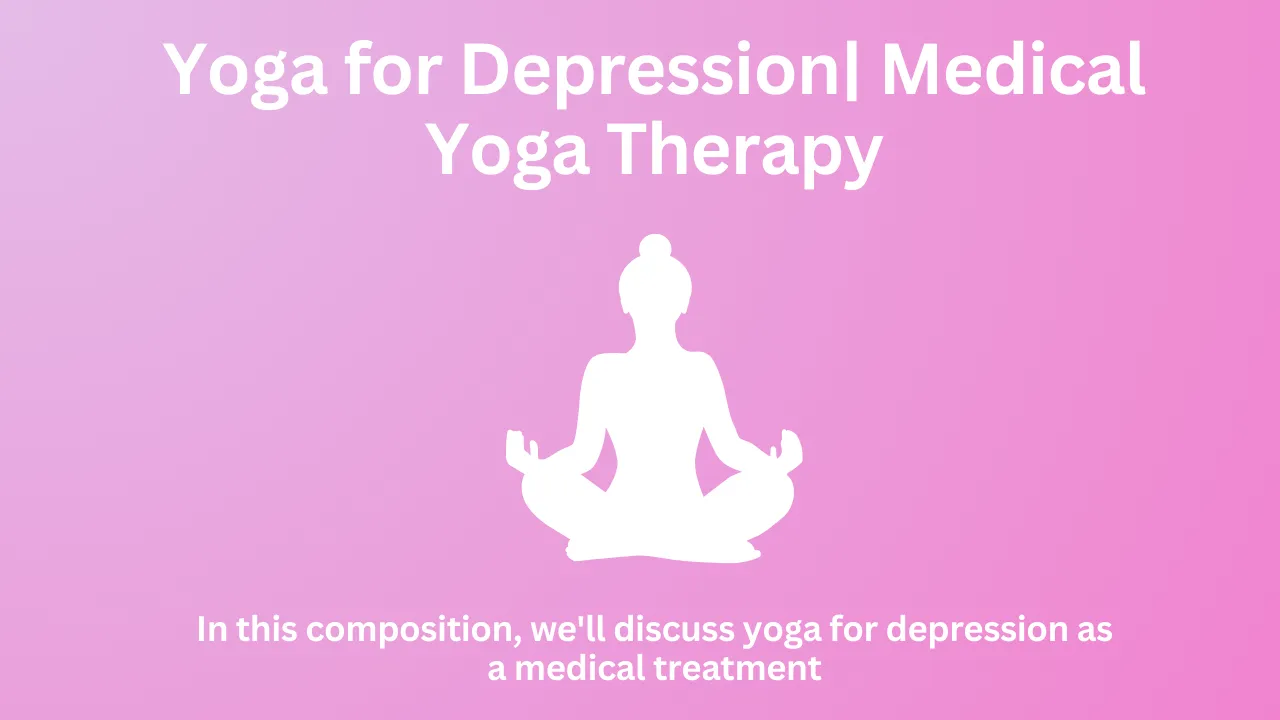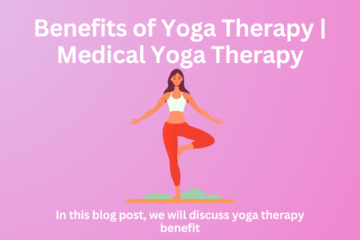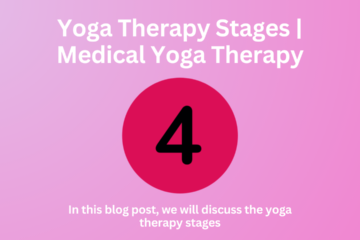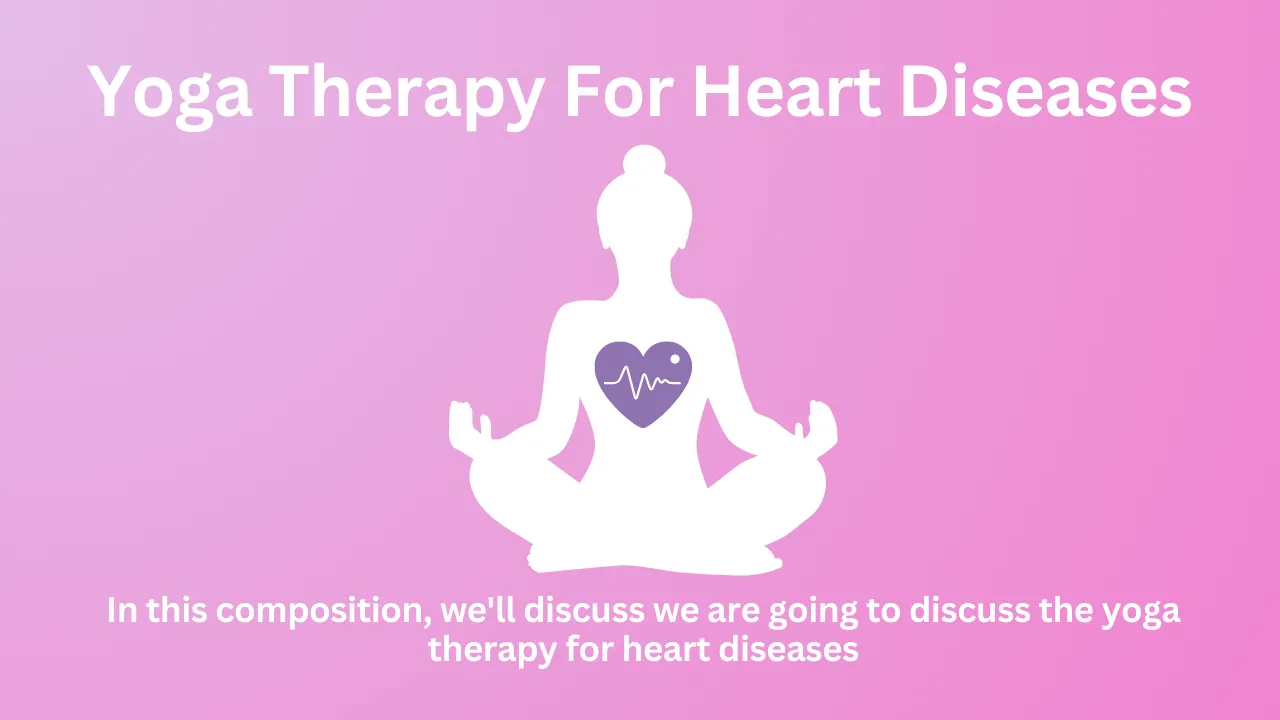Yoga for Depression | Medical Yoga Therapy

Yoga lovers and patients with diseases are looking to see whether medical yoga therapy is helpful or works as a therapy for depression. But most people don’t know yoga works as a therapy and heals our body and mind. A complex illness that has a profound societal impact, is thought to be caused by an intricate variety of genetic, biochemical, psychological, and circumstantial factors.
The development of yoga modules for use with elderly subjects, caregivers of persons with disease or disability, and caregivers of patients with schizophrenia has been described with the literature. We are unaware of the development of a yoga module specifically for the therapy of patients with depressive disorder. In this report, we describe the process of developing a module for a depressive disorder that was pilot-tested.
Yoga Treatment for Psychiatric Disorders
Yoga is an age-old Hindu practice, the potential therapeutic benefits of which the West has just lately learned about. A growing corpus of empirical research has documented the beneficial effects of mind-body therapy in the management of mental illnesses, including anxiety and depression. According to the National Institutes of Health Center for Complementary and Alternative Medicine, mind-body therapies encompass a range of methods intended to improve one’s mental ability to influence physical symptoms and function.
It is thought that practicing yoga strengthens the bond between the mind and body and can be therapeutically applied to a range of illnesses. Numerous pathways have been demonstrated by yoga to have potential therapeutic effects, including the activation of antagonistic neuromuscular systems, limbic system stimulation, and modifications to the autonomic nervous system, specifically a decrease in sympathetic tone.
For Clinical Use
- Yoga is a useful tool for easing anxiety and depressive symptoms.
- Yoga has few negative effects and few contraindications.
- Yoga could be a beneficial adjunctive therapy for mental health issues.

Variety of Yoga
A variety of practices are included in yoga, including asanas (physical positions), pranayama (controlled breathing), dhyana (meditation), alignment, flexibility, energy awakening, chanting and singing, and word repetition. The studies that made up our meta-analysis practiced the most popular styles of yoga practiced in the West: Hatha, Iyengar, Sudarshan Kriya, and other forms of contemplative yoga.
1. Hatha Yoga
Asanas, or physical yoga postures, are the focus of Hatha yoga, which is the most widely practiced kind of yoga in the West. Asanas, in contrast to other exercises, are performed slowly with the goals of promoting mental and physical synchronization, promoting mindfulness and relaxation, and relieving mental tension.
2. Iyengar Yoga
B. K. S. Iyengar developed Iyengar yoga, a style of Hatha yoga that emphasizes the structural alignment of the body via the development of asanas and makes use of props like belts and blocks to assist in executing the asanas. Iyengar yoga was created to treat a wide range of conditions, illnesses, and disorders.
3. Sudarshan Kriya Yoga
Slow and regulated breathing (ujjayi, bhastrika, and Sudarshan Kriya yogic breathing) is emphasized in Sudarshan Kriya yoga and is said to help reduce anxiety, depression, daily stress, posttraumatic stress, and diseases linked to stress. Among the elements of Sudarshan Kriya yoga that are thought to promote calmness are increased parasympathetic drive, the calming of stress response systems, and a reduction in the neuroendocrine release of hormones like cortisol.

4. Meditation
Some of the studies in our research used meditation as a component of yoga. It is defined as a conscious mental activity that causes a series of coordinated physiological changes known as the relaxation response. The brain areas that are engaged during meditation have been identified and characterized using functional magnetic resonance imaging.
Since research shows that during meditation, brain regions linked to attention and autonomic nervous system regulation are active, the effects of meditation on various physiologic functions have an anatomical and neurochemical basis.
- According to one study, the left-sided anterior brain activity—a part of the brain associated with positive emotions—was considerably raised during meditation.
- According to certain research, meditation can worsen psychosis by increasing dopamine levels. Nevertheless, as these studies lacked randomized, controlled trials, additional investigation is required to evaluate any potential harm that meditation may cause to those who suffer from mental illnesses.
5. Yoga Therapy For Tolerance and Safety
When done properly, yoga is comparatively safe, well-tolerated, and has very few negative consequences. However, yoga therapy has not been proven to be an empirically supported adjunctive treatment for mental health issues. This meta-analysis set out to investigate the effectiveness of yoga therapy as an adjunctive treatment for those suffering from mental illnesses such as PTSD, depression, anxiety, and schizophrenia.
Conclusion
Studies have indicated that yoga has a significant effect on depression, an illness that is influenced by a multitude of circumstances and symptoms. It can help people change how they interpret and assess stress, which can change how they react emotionally and physically.
Therefore, yoga therapies need to be considered to help people who are depressed manage their symptoms and the strains of everyday life. If you ever feel confused or need guidance, reach out to us through our contact form. I wish you a fulfilling and perfect yoga experience ahead!



0 Comments